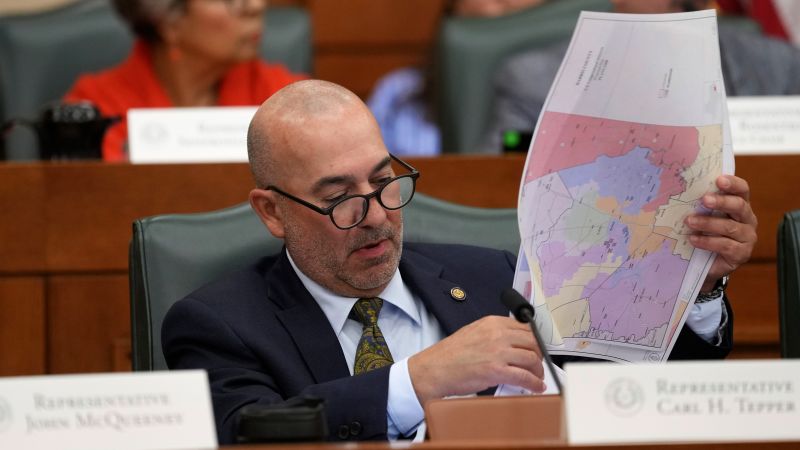A Texas House panel has advanced a new congressional map that could significantly reshape the political landscape in the state. On March 4, 2024, the panel’s vote reflects a strategic push by state Republicans, backed by former President Donald Trump, to strengthen the party’s hold on the House of Representatives ahead of the 2026 midterm elections.
The redrawn map aims to make five Democratic congressional seats more favorable to Republican candidates, a move that Texas Republicans justify by claiming that the current maps are unconstitutional and racially gerrymandered. Conversely, Democrats argue that such changes would disenfranchise voters, particularly people of color. The Texas House redistricting committee approved the map along party lines, setting the stage for a full House vote.
National Democrats have announced plans to challenge the new map in court if it passes. US House Minority Leader Hakeem Jeffries has expressed concerns about what he describes as a “redistricting arms race,” with Democratic governors in states like California preparing to implement similar strategies to secure more seats for their party. Democrats are aiming for a net gain of just three seats to gain control of the House in the upcoming midterms.
Under the proposed Texas map, there are now 30 districts that would have favored Trump in the 2024 election, an increase from 27 under the existing boundaries. Notably, five additional seats were won by Trump with margins exceeding 10 percentage points, according to data from the Texas Legislative Council.
One of the most contentious changes involves the elimination of the Austin-area seat currently held by Rep. Greg Casar. This adjustment may force Casar into a primary contest with fellow Democrat Rep. Lloyd Doggett. Sources close to Doggett indicate that he is unlikely to step aside quietly, especially given his substantial campaign fund of $6.2 million. Doggett has focused his efforts on opposing the new GOP map without addressing his own electoral future.
Casar has publicly committed to resisting the new map, urging voters to “mobilize against this illegal map.” Additionally, the proposed redistricting includes plans to merge the Houston-area seat of Rep. Al Green with a vacant seat previously held by the late Rep. Sylvester Turner, who passed away earlier this year. This alteration is expected to create new challenges for Green, who will likely face competition from other Democrats vying for the newly defined district.
Changes in southern Texas districts, currently represented by Rep. Henry Cuellar and Rep. Vicente Gonzalez, are also expected to lean more Republican. Nonetheless, these incumbents are viewed as centrist politicians who may still perform well in their districts despite statewide Democratic trends.
As discussions continue and the political landscape evolves, Trump has yet to comment on the proposed Texas map, leaving many observers anticipating his reaction. The developments in Texas could serve as a bellwether for other states as both parties prepare for the critical midterm elections.





































































